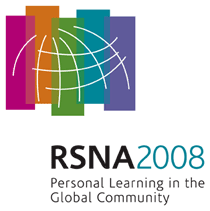
Abstract Archives of the RSNA, 2008
LL-GI4316-R10
Cytomegalovirus Enterocolitis in Non-AIDS Patients: Evaluation of CT Findings and Clinical Features
Scientific Posters
Presented on December 4, 2008
Presented as part of LL-GI-R: Gastrointestinal
Eun Young Chae, Presenter: Nothing to Disclose
Seung Soo Lee MD, Abstract Co-Author: Nothing to Disclose
Hye Jin Kim MD, Abstract Co-Author: Nothing to Disclose
Seong Ho Park MD, Abstract Co-Author: Nothing to Disclose
Ah Young Kim MD, Abstract Co-Author: Nothing to Disclose
Hyun Kwon Ha MD, Abstract Co-Author: Nothing to Disclose
To evaluate CT findings and clinical features of cytomegalovirus (CMV) enterocolitis in Non-AIDS patients.
Twenty one non-AIDS patients (eleven women, ten men; age range, 26-75 years; mean age, 54 years) with pathologically proven CMV enterocolitis who had available CT scans, were included in our study. Medical records were reviewed for patients’ immune status, presenting symptoms, and clinical courses. CT scans were retrospectively reviewed by the consensus of two radiologists for the location of involved bowel (i.e. small bowel, colon, and both), maximal bowel thickness, pattern of bowel wall enhancement (i.e. single ring, double ring, and homogeneous pattern), the presence of pericolic or perienteric infiltration, and the amount of ascites.
Four patients were apparently immunocompetent, whereas 17 patients had underlying medical conditions which may alter host immune status including chemotherapy (n=5) for malignancy, immunosuppression (n=4) for organ transplantation, blood dyscrasia (n=2), diabetes mellitus (n=3), recent major surgery (n=2), and renal failure (n=1). The presenting symptoms were abdominal pain (n=14), hematochezia (n=11), diarrhea (n=11), and fever (n=3). On CT, all patients showed bowel wall thickening (mean maximal thickness, 8 mm for the colon and 6 mm for the small bowel) involving both small bowel and colon (n=5) or limited to the colon (n=11) or the small bowel (n=5). Bowel wall enhancement pattern was single ring pattern (i.e. strong enhancement of inner layer) in 12 patients, double ring pattern in five, and homogenous pattern in four. Bowel involvement was continuous in 15 patients. Ascites was present in 11 patients and pericolic or perienteric infiltration in eight. Four patients with delayed diagnosis ultimately underwent surgery due to bowel perforation (n=3) or refractory GI bleeding (n=1). Mortality was noted in five patients.
CMV enterocolitis can develop in immunocompetent as well as immunocompromised non-AIDS hosts, and is characterized by mild continuous bowel wall thickening with singe or double ring enhancement pattern on CT. Delayed diagnosis may lead to serious complications such as bowel perforation.
Understanding CT and clinical features of CMV enterocolitis will help to make the diagnosis of CMV enterocolitis, which is sometimes unexpected in non-AIDS hosts especially with normal immune status.
Chae, E,
Lee, S,
Kim, H,
Park, S,
Kim, A,
Ha, H,
Cytomegalovirus Enterocolitis in Non-AIDS Patients: Evaluation of CT Findings and Clinical Features. Radiological Society of North America 2008 Scientific Assembly and Annual Meeting, February 18 - February 20, 2008 ,Chicago IL.
http://archive.rsna.org/2008/6019783.html

